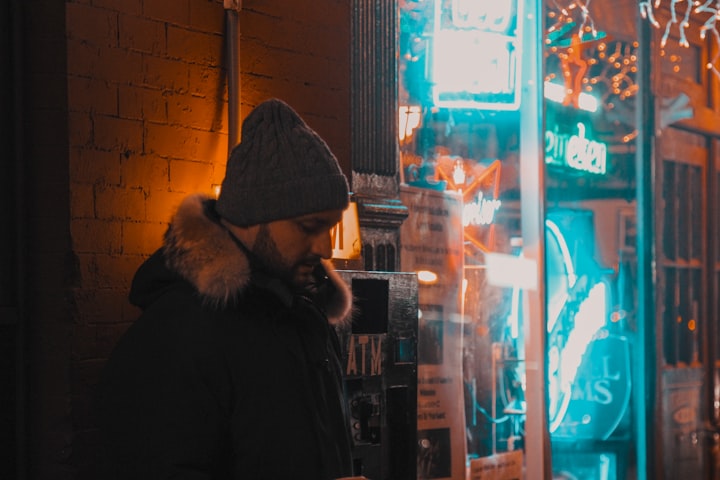The Little Doppelgangers
A Tale of Identity and Acceptance

The Discovery
It was a typical morning for the world's citizens until they woke up to find something strange and unexpected. As they looked in the mirror, they were shocked to discover that they had been cloned, and their clone was identical to them in appearance but only 50 cm tall.
John, a businessman from New York City, woke up to find a miniature version of himself sitting on his bedside table. At first, he thought it was a joke or a dream, but as he looked around his apartment, he saw that everything was in its place and realized this was real. He picked up his clone and held it in his hands, examining it closely. It was a perfect replica of him, down to the smallest detail.
Meanwhile, Sarah woke up in London to find her clone sitting on her kitchen table. She screamed in shock, dropping her coffee mug and shattering it into pieces. She couldn't believe her eyes; she looked around her house and saw a miniature version of all her belongings. Her husband, who was still asleep, woke up to her screams, and he, too, was shocked to find his clone sitting next to him on the bed.
As the news spread, people worldwide began to discover their clones. They were confused and frightened by this sudden development but also curious. They began to explore their neighborhoods and cities to find others who had been cloned. They shared their stories and experiences, and the media quickly picked up on the phenomenon.
The world was chaotic as people struggled to understand and come to terms with their new reality. Some were in disbelief, some were terrified, and some were excited. But one thing was sure; nothing would ever be the same again.
As the day progressed, governments and scientists scrambled to understand the cause and implications of cloning. Some experts suggested that it resulted from a wrong genetic experiment, while others speculated that it was an act of god. But no one had any concrete answers. The world was at a loss, and the only thing they knew for sure was that their lives had been forever changed.
The Initial Reaction
As the news of cloning spread, people worldwide began to react differently to the discovery of their clones. Some were in disbelief, some were terrified, and some were excited. They began to share their stories and experiences, and the media started to report on the phenomenon.
For John, the businessman from New York, the discovery of his clone was a mixed blessing. On the one hand, he was fascinated by technology and its potential for medicine and science. On the other hand, he was worried about the social and legal implications of having a clone. He didn't know how to explain this to his family, friends, colleagues, and clients.
Sarah, the woman from London, was still in shock from the discovery of her clone. She felt a sense of fear and confusion. She couldn't understand how this could have happened, and she didn't know what to do with her clone. She didn't know if she could take care of it or even wanted to.
Meanwhile, in a small village in China, a farmer named Li was thrilled to find his clone. He had always wanted a child but had never been able to have one, and now he saw the clone as a second chance. He immediately took the clone to his home and began to care for it.
People worldwide began to share their stories and experiences as the day progressed. They formed support groups and communities and began exploring the benefits and drawbacks of having a clone. Some found their clones were a source of joy and companionship, while others struggled with having a miniature version of themselves.
The media quickly picked up on the phenomenon, and soon cloning was the top story in every news outlet. People were eager for information and answers, but the government and scientists were still trying to understand the cause and implications of cloning.
The initial reaction to cloning was shock and confusion, but as people began to share their stories and experiences, they started to come to terms with their new reality. They knew their lives had been forever changed, but they were determined to make the best of it.
The Adaptation
People worldwide started to adjust to their new lives with their clones as the days passed. Some struggled with having a miniature version of themselves, while others embraced it. They began to explore the benefits and drawbacks of having a clone.
John, the businessman from New York City, was initially hesitant about his clone, but as he spent more time with it, he began to see its potential. He realized that his clone could be a valuable asset in his business; it could help him to be in two places simultaneously and multitask. He trained his clone to help him with his work, and it soon became an integral part of his business.
Sarah, the woman from London, was still struggling with her clone. She was overwhelmed by the responsibility of caring for another being and didn't know how to handle it. She was also worried about how her friends and family would receive her clone. But with the help of a support group and her husband, she began to come to terms with her clone. She started seeing it as a unique individual, not just a miniature version of herself.
Li, the farmer from China, was overjoyed with his clone. He had always wanted a child, and now he had one. He spent every waking moment with his clone, teaching it about farming and the joys of rural life. He even built a small house for his clone next to his own so they could live together.
As more and more people began to adapt to their clones, the world started to change. Businesses and organizations had to adapt to the reality of having miniature versions of their employees. Governments had to create new laws and regulations to address the rights and responsibilities of clones. And society as a whole had to come to terms with the fact that the world was now a different place.
Despite the challenges, people worldwide were determined to make the best of their new reality. They were curious and innovative and willing to take risks and try new things. They knew their lives had been forever changed, but they were determined to make the best of it. They were determined to adapt and make the world better for themselves and their clones.
The Challenges
As the weeks and months passed, the characters continued to live with their clones and faced various challenges. They had to deal with the social and legal implications of having a clone, as well as the practical difficulties of everyday life. They also had to navigate the complex emotions of having a miniature version of themselves.
John, the businessman from New York City, found that his clone was not only an asset in his business but also brought a lot of attention from the media and competitors. He had to deal with the legal implications of having a clone, such as intellectual property rights and privacy issues. He also found that people treated him and his clone differently; some were envious, and others were suspicious.
Sarah, the woman from London, struggled with the responsibility of raising her clone. She had to balance her work and personal life while also caring for her clone. She found that her clone was not well received by her friends and family; they were uncomfortable and didn't know how to treat it. She also found that society was not ready for the concept of cloning and had to deal with stares and prejudices everywhere she went.
Li, the farmer from China, was initially overjoyed with his clone, but he soon found that raising a miniature version of himself was not easy. He discovered that his clone could not do the same work as him, and he had to find new ways to use it. He also found that his community did not accept his clone, and he had to deal with isolation and discrimination.
As the characters continued to live with their clones, they also had to deal with the emotional implications of having a miniature version of themselves. They found that their clones were a mirror of themselves, reflecting both their strengths and weaknesses. They also found their relationship with their clones complex. It was intricate and multi-faceted.
The characters faced many challenges, but they were determined to overcome them. They knew their lives had been forever changed, but they were determined to make the best of it. They were determined to find a way to live, work with their clones, and make the world a better place for themselves and their clones.
The Resolution
As the characters continued to live with their clones, they eventually came to a resolution about them. They learned to accept them as a part of their lives and found ways to live and work with them. They discovered that having a clone was not a curse but an opportunity to learn more about themselves and grow as individuals.
John, the businessman from New York City, found that his clone was not only an asset in his business but also brought a lot of attention from the media and competitors. He had to deal with the legal implications of having a clone, such as intellectual property rights and privacy issues. But he also found that his clone was a valuable companion and helper; it helped him to understand himself better and to be more efficient in his work. He eventually concluded that his clone was a blessing, not a curse.
Sarah, the woman from London, struggled with the responsibility of raising her clone. She had to balance her work and personal life while also caring for her clone. But she also found that her clone was unique with its personality and talents. She learned to see her clone as a gift, not just a miniature version of herself. She also found that society was changing, and people were starting to accept the concept of cloning.
Li, the farmer from China, was initially overjoyed with his clone, but he soon found that raising a miniature version of himself was not easy. He discovered that his clone could not do the same work as him, and he had to find new ways to use it. But he also found that his clone was a valuable companion and helper; it helped him to understand himself better and to be more efficient in his work. He also found that his community was changing, and people were starting to accept the concept of cloning.
The story ends with the characters in a better place, having gained a deeper understanding of themselves and others. They learned that having a clone was not a curse but an opportunity to learn more about themselves and grow as individuals. They also learned that society was changing, and people were starting to accept the concept of cloning. They knew their lives had been forever changed, but they were determined to make the best of it. They were determined to make the world better for themselves and their clones.
About the Creator
Liviu Roman
Mahatma Gandhi — 'Be the change that you wish to see in the world.'






Comments
There are no comments for this story
Be the first to respond and start the conversation.